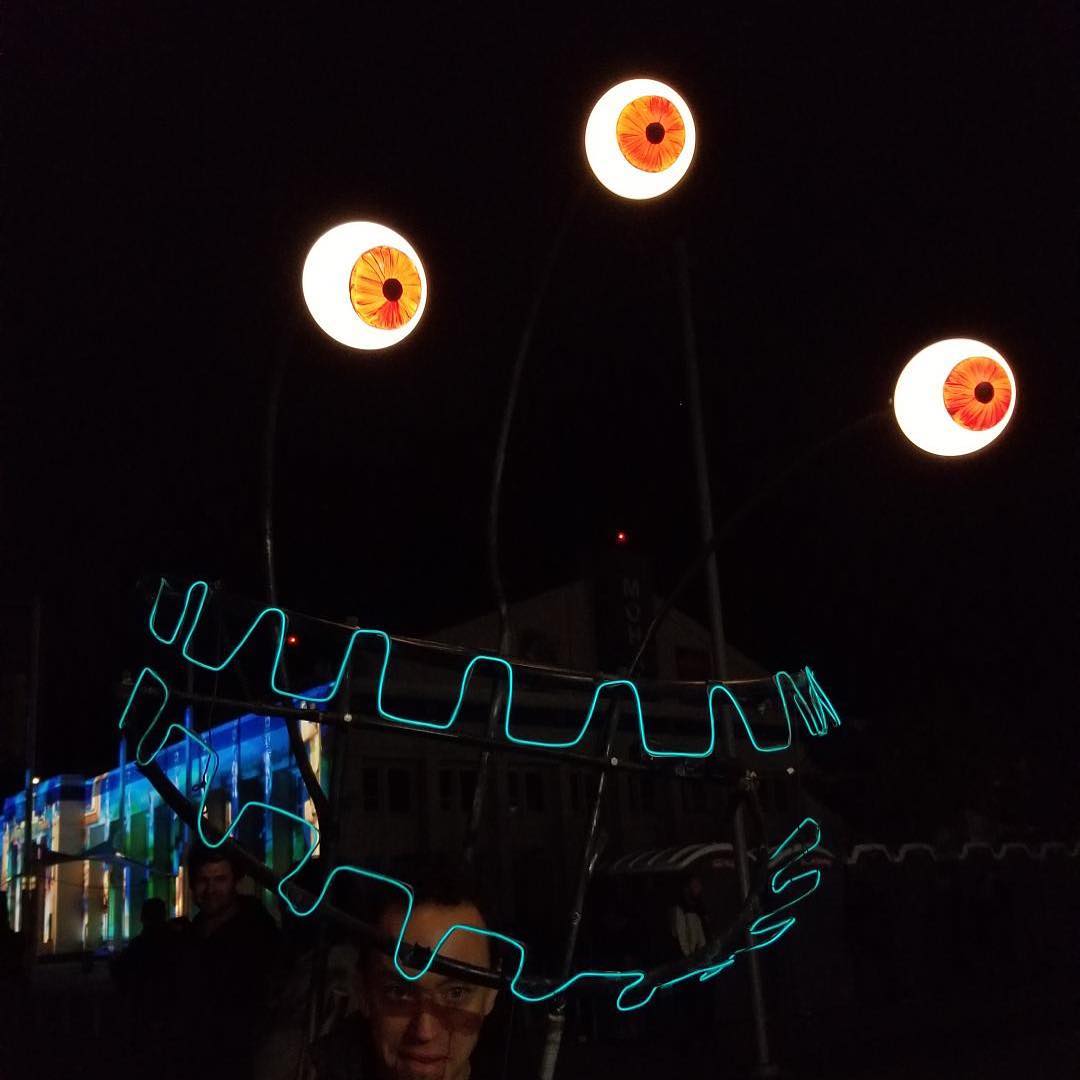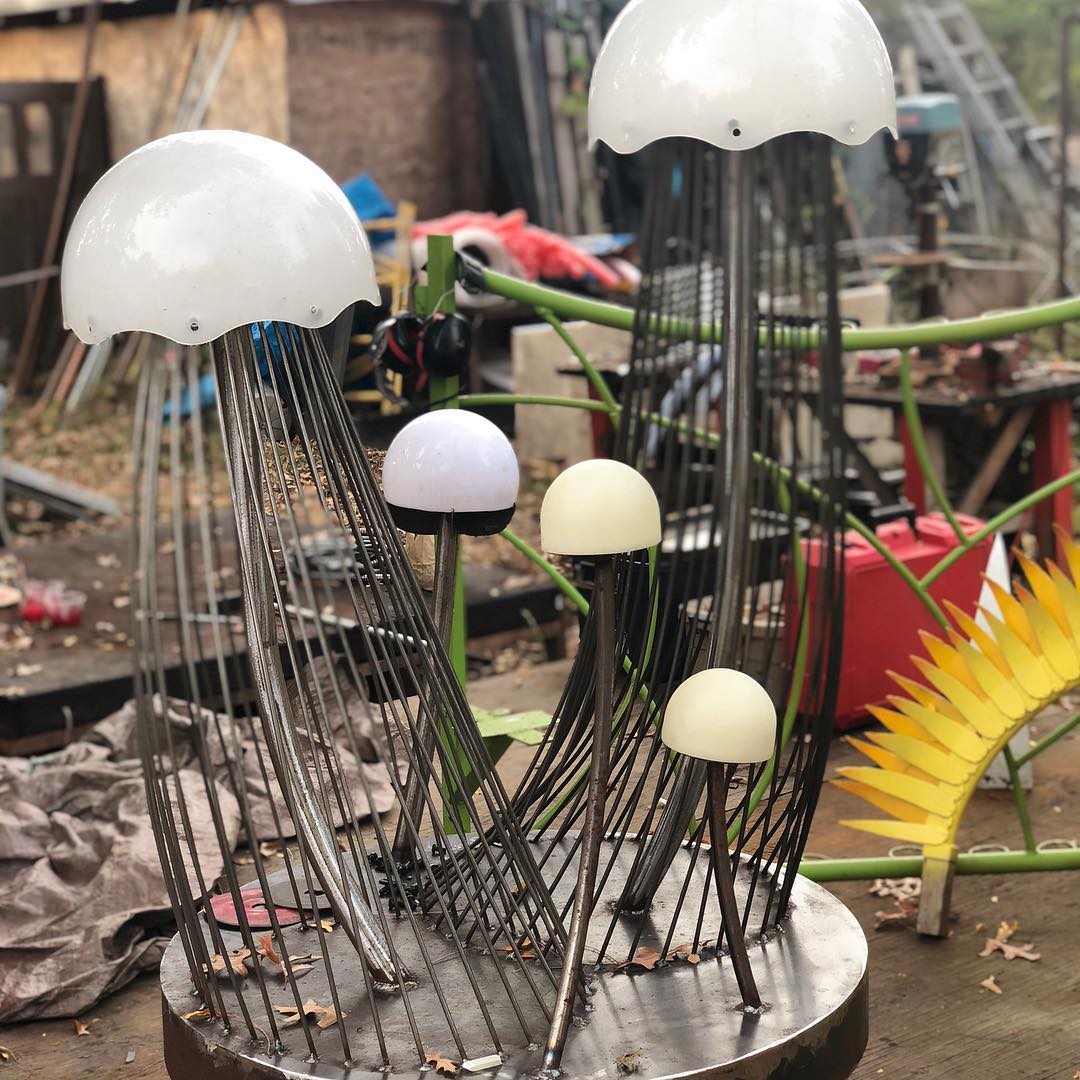Unlike Mechan 9, this robot is big enough to go inside. All sorts of stuff to explore inside. #mechanx #mechan9 #lifeisbeautiful2018 #fallenrobot #giantrobot #tylerfuquacreations
Mechan X is ready for day three of Life is Beautiful. #mechanx #mechan9 #lifeisbeautiful2018 #fallenrobot #giantrobot #tylerfuquacreations
Great shot of Mechan X’s brain from Life is Beautiful. #mechanx #lifeisbeautifulfestival #giantrobot #tylerfuquacreations
Here is a nice daytime walk around of MX before the crowds rolled in. #lifeisbeautiful2018 #lifeisbeautifulfestival #tylerfuquacreations #mechanx #giantrobot
“Narratives are the stories we tell that help us make sense of the world,” said Laura Hughes, Director of Narrative Strategies for PolicyLink. “And, most importantly, stories tell where we are today and shape the world we want to create.”
In this article, she addresses three ideas to keep in mind as, “we build our bright and bold housing futures,” including centering Black, Brown, and Indigenous communities are protagonists, messaging inevitability, and how, “the words we use shape our reality.”
“Upstart Co-Lab’s founding partner Laura Callanan speaks with Penta senior writer Abby Schultz about the group’s initial impact investments in the creative economy through its member community of arts institutions, artists, and funders.”
Abby Schultz is a senior writer for Penta, a Barron’s Group publication, and Laura Callanan is the founding partner of Upstart Co-Lab.
Join them on Friday, April 29 at 12pm ET by registering here.
Just making some trippy mushrooms to go along with the Psychedahlia Garden for the upcoming Lumiere Light Festival in BC.
GIA is advocating for policies that increase the amount of assets that people with disabilities can hold while remaining eligible for public benefits because disabled artists – indeed, all workers – deserve to get paid for their work and to build savings, even when circumstances – like a disability – prevent them from working a conventional fixed role or schedule. GIA is advocating for disability justice for artists and for all as part of our valuing of intersectionality.
In our Disability Justice in Arts and Culture Funding webinar, the speakers advocated for increased support to artists with disabilities. During this event, I received an email from a colleague who told me of the challenges they faced while trying to support artists with disabilities without disqualifying them from receiving Supplemental Security Income (SSI) benefits.
The SSI program is meant to reduce extreme poverty among the elderly and people with disabilities. Asset limits are part of the SSI program design: to qualify for SSI, your countable resources must not be worth more than $2,000 for an individual or $3,000 for a couple. These limits have not been raised or even adjusted for inflation since 1989. People are on SSI because they cannot otherwise “work” – but, by holding them to 1989 levels, we are preventing them from being paid for their creative offerings to society, something to which every artist should have access.
Understanding how these policies and systems are working, GIA recommends the raising of limits or “caps” (and indexing these caps to inflation) on the amount of income that people with disabilities and other low-income Americans may secure before being deemed ineligible for public supports such as SSI and other programs. These changes would allow GIA’s members to lend grant support to these artists without endangering the public support they require to survive; and most importantly, these changes would allow them to share their perspectives and vision, enrich the cultural fabric of our nation, and no longer deny proper compensation for their work. If an artist who is receiving SSI is turning down opportunities, they are losing out financially while society is losing out on access to the artist’s thinking, creativity, and talent.
These outdated caps are harmful for people with disabilities – including disabled artists – who seek opportunities to be fairly compensated for their art or receive grant support to enable them to create – perpetuating cycles of poverty. U.S. families’ median net worth is $121,700. The median net worth among households with adult members with a disability is $43,390. Households with adult members with a disability are almost 1.5 times more likely to be liquid asset poor.
These asset caps also have intersectional impacts. People with disabilities are generally low-income, a social outcome exacerbated by the intersection with race. The official U.S. poverty rate in 2020 was 11.4%. The poverty rate for non-Hispanic White disabled people is 24%. Nearly 30% of disabled Latinx people early 40% of disabled Black people live on income below the poverty line. As of March 2022, 3.6% of Americans are considered unemployed, while 65% of people with disabilities are unemployed. 75% of Black people with disabilities are unemployed. This overlap between the economic precarity of disabled people and BIPOC communities requires that we advocate for changes to public policies that allow grantmakers to support artists with disabilities and low-income artists. Thus, allowing them to be fairly compensated in ways that work for them without endangering their access to support such as healthcare.
Fortunately, policymakers have begun to address these shortcomings. In May 2021, U.S. Senators Chris Coons (D-DE.) and Sherrod Brown (D-OH) introduced the Allowing Steady Savings by Eliminating Tests (ASSET) Act, which raises the asset limitation for SSI and indexes it to inflation. The act also eliminates asset limitations that restrict eligibility for three other public assistance programs: The Temporary Assistance for Needy Families (TANF) program, the Supplemental Nutrition Assistance Program (SNAP), and the Low-Income Home Energy Assistance Program (LIHEAP). U.S. Representatives Jimmy Gomez (D-CA.) and Kim Schrier, M.D. (D-WA.) introduced companion legislation in the House.
The setting of higher asset thresholds and indexing them to inflation as envisioned by the ASSET Act is an essential element of better support for artists with disabilities and other artists that receive public support. This bill provides one component of a solution to this problem, and GIA is advocating for and encouraging this as part of a larger public policy agenda – as part of our embrace of artists, workers, and intersectionality. We will also be working with our peers and policymakers to advance other solutions that enable full participation by artists with disabilities in our economy.
GIA invites all non-profit members to advocate for this bill and others like it. We invite our foundation members to support applicants’ advocacy to facilitate earnings and protecting the assets of all our nation’s artists and other workers. We have more than just grants at our disposal. We can – all of us – use all our tools to help break the cycles of poverty that inhibit the full and free expression of all our nation’s artists and ensure artists with disabilities have access to fuller economic opportunities.
“A new effort to help grant makers change the way they work so they can better support Black-led nonprofits was announced today. Abundance is a collaboration between three Chicago-area grant makers, Chicago Beyond, the Grand Victoria Foundation, and the John D. and Catherine T. MacArthur Foundation.”
“Abundance is not a pledge, but rather a program for grant makers,” said author Jim Rendon. “The foundations are in the process of hiring a director for Abundance and have given the group an annual budget of $400,000 for three years. Much about the way it works will be determined by the director, but the idea is to provide a forum for grant makers to learn from one another about how to change their practices so they are more effectively supporting Black-led groups, which are often small, locally focused, and historically underfunded.”
Abundance plans to address issues such as internal barriers and finding ways, “to get more grant makers interested in supporting Black-led nonprofits with multiyear grants, [and] to understand the challenges Black-led groups faced and to help such groups grow in a way that can be sustained.”






